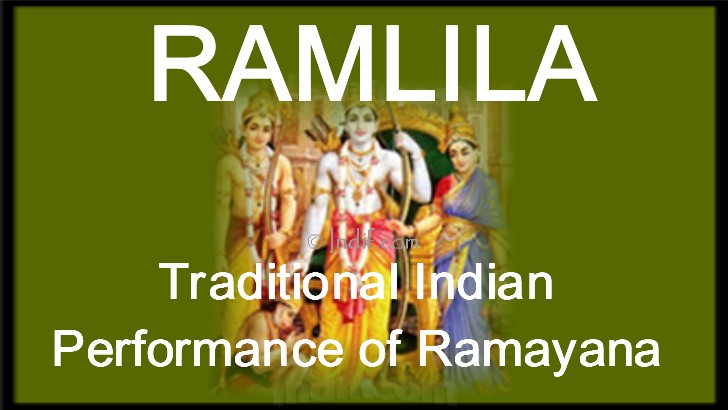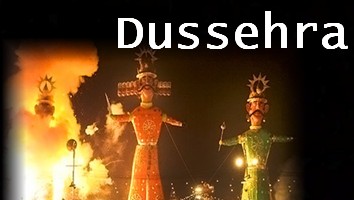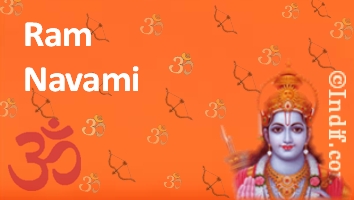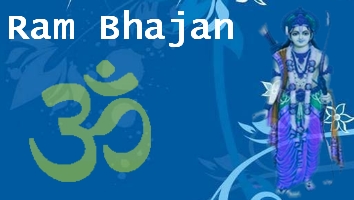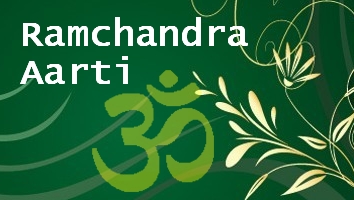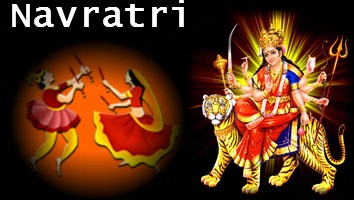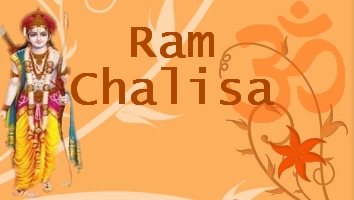![]()
Source : Complied from various published articles on Ramlila
Ramlila is the the enactment of the story of Lord Rama. In Ramlila the life of Rama is shown in the form of a series of plays. The complete life story of Rama is covered in ten days.
It is one of the most popular festivals of North India. Ramlila is associated with the Vijayadashmi (Dussehra) celebrations in late Sept. & early Oct. and also with Ramnavami, the birthday of Lord Rama. The Ramlila ends on Vijaya Dashami - the day of victory when Rama defeats the Demon King Ravana.
Ramlia is India's most famous theatrical experience. Historically, this staging of the Ramayana is based on the Ramacharitmanas, one of the most popular sacred text of Hindu religion. Ramacharitmanas was composed by Tulsidas in the sixteenth century in a dialect that is close to Hindi in order to make the Sanskrit epic available to all. Each day features readings from the Ramayana; in most places plays are presented depicting scenes from the Ramayana story, sometimes on a grand scale.
The festival of Ramlila centers around Lord Rama (the Hindu god) and his life as a mortal being on the earth. The ideal human character Rama, is an ideal son, brother, friend, husband and king. Rama accepts a fourteen years exile to enable his father to fulfill his pledge to one of his queen Kakayi. Rama spends a simple, pure and arduous life in deep forest. His life in the forest is full of hardships. His wife Sita is abducted by Ravana in the forest. Rama then gathers an army of monkeys to fight Ravana. He crosses the sea to reach Ravana's kingdoms and fights to save his wife. After fourteen years he returns back to his kingdom Ayodhaya, people celebrated his arrival with lights all around Ayodhaya.
During Ramlila, this story of Rama's life is enacted to mark his victory over Ravana and his return to his kingdom. The central theme is "the victory of the good over the evil". During its performance the Ramayana is constantly recited accompanied by music. It presents a fine blending of music, dance, mime and poetry before an enthusiastic and religious audience sharing every event of the story with the actors. The drama is enacted by young boys and the play ends with Rama shooting burning arrows towards the effigies of Ravana (containing fire crackers) which catches fire and burns marking the end of the evil-Ravana.
The festival of Ramlila ends with Dussehra. It is performed across the whole of northern India during the festival of Dussehra. These Ramlila shows are very popular in Uttar Pradesh, Madhya Pradesh and to an extent in Maharashtra. The most representative Ramlilas are those of Ayodhya, Ramnagar and Benares, Vrindavan, Almora, Sattna and Madhubani.
The largest of the Ramalila plays is staged across the river from the holy city Benaras (Varanasi), where the kigs have established an immense field as a stage for the Ramayana story.

